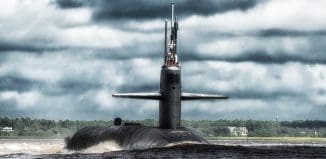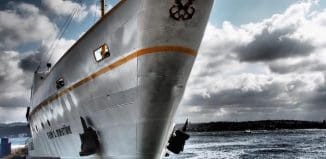New Cargo Radiation Detection Technology
This post is also available in:  עברית (Hebrew)
עברית (Hebrew)
Seaports customs and security professionals might sometimes miss contraband attempts, including radiological materials. The problem was hightened during a US congressional hearing, when officials emphasized the gaps in securing nuclear and radiological materials around the globe, and acknowledged the challenges that the U.S. faces in protecting its ports from smuggled materials.
Passport Systems, Inc. developed the fixed cargo scanner SmartScan 3D, a radiation detection technology that can help domestic and foreign seaports thwart nuclear terrorists seeking to transport radioactive materials.
Robert Ledoux, President, CEO, and Director of Passport Systems, Inc., said that “at the hearing, subcommittee members cited the need for technology that can accurately detect nuclear threats and contraband without significantly slowing the shipping process.” He added that the technology was already being deployed at the port in Boston, and is ready to be deployed to other ports in the U.S. and internationally.
According to PR Newswire, he cargo scanner can protect people and property from dirty bombs and other nuclear threats. The system automatically identifies any radioactive material, including “actinides” that may signal a weapon of mass destruction or smuggled special nuclear materials, after the cargo has been unloaded onto conveyances.
The non-intrusive cargo inspections also detect explosives and contraband such as drugs, tobacco, and firearms.
Passport will this fall unveil SmartScan at the Massachusetts Port Authority, Port of Boston’s Conley Container Terminal. The facility is part of a U.S. Department of Homeland Security, Domestic Nuclear Detection Office (DNDO) project
As noted at the subcommittee hearing, a limited X-ray scanning process is used at most ports today. Dense or thick objects, which could hide nuclear threats or contraband, require that individuals open the containers and inspect the objects by hand; it slows the shipping process by hours and the process could be dangerous for inspectors.
By contrast, SmartScan doesn’t require that containers be opened. The technology scans a container, provides a three-dimensional map of the cargo, and sends alerts to flag suspicious cargo. Within minutes, it determines if an actinide is present and whether it is a bomb.
SmartScan works like this: Trucks leaving the port with cargo are conveyed through a 176-foot tunnel. The cargo is inspected using high-resolution x-rays and other passive radiation detection methods with proprietary technologies. Three-dimensional images based on the effective atomic number and density are generated as the system measures photon signals to determine anomalies, such as explosives or radioactive material. Additional technology determines if special nuclear materials are present.





























